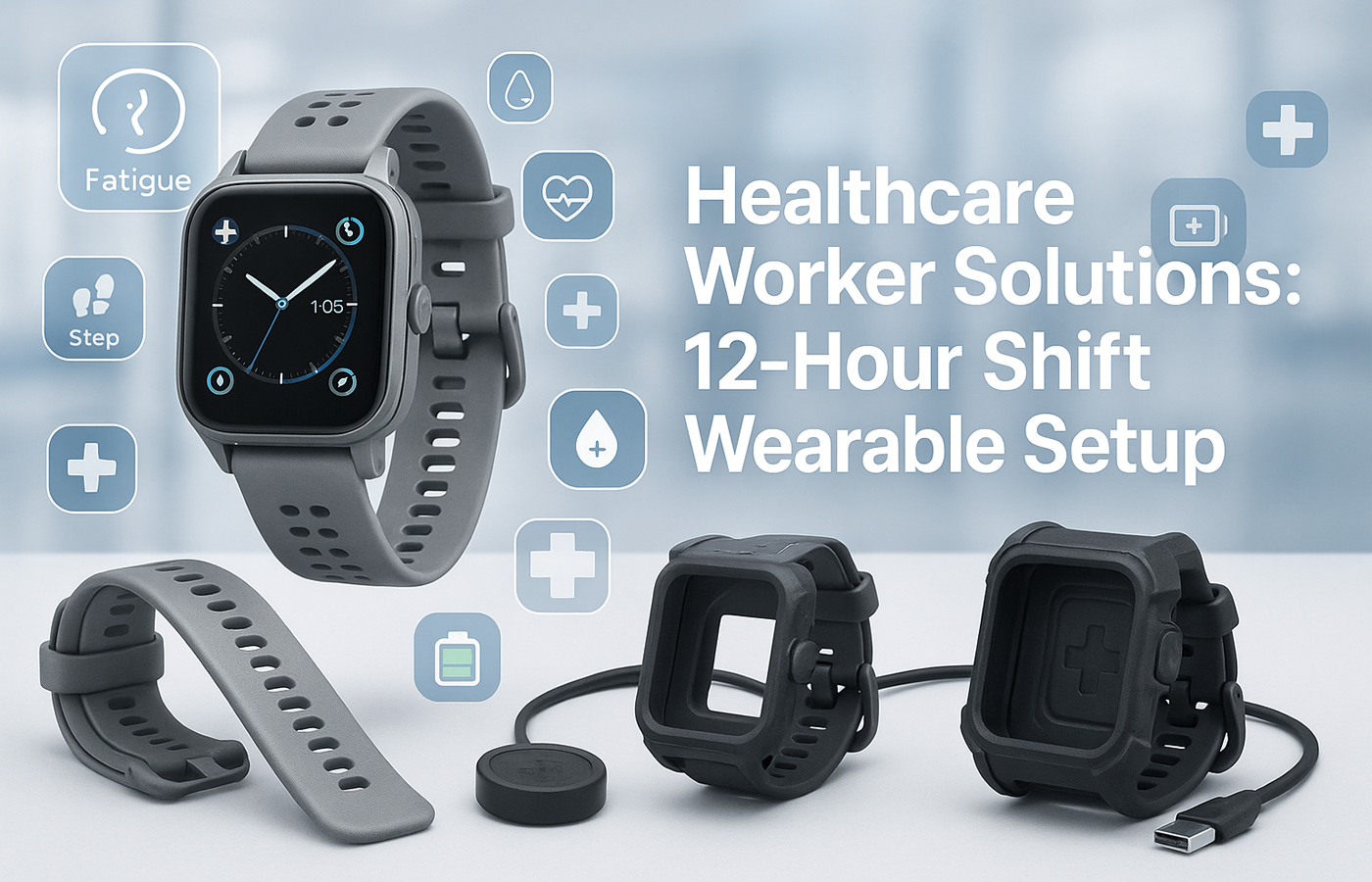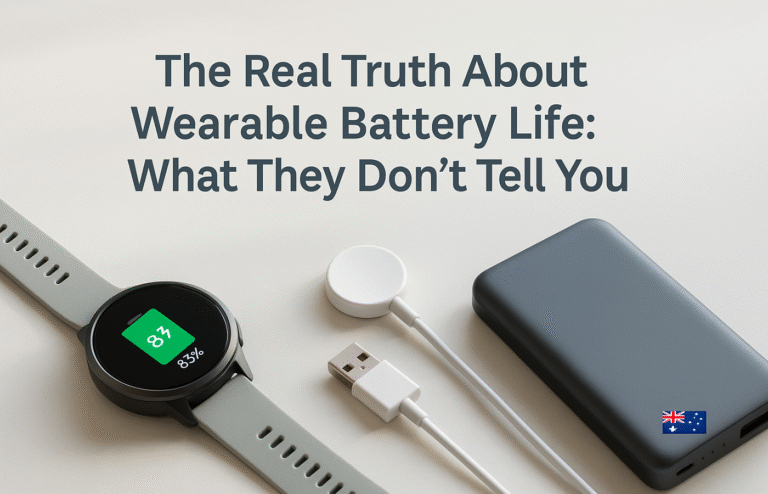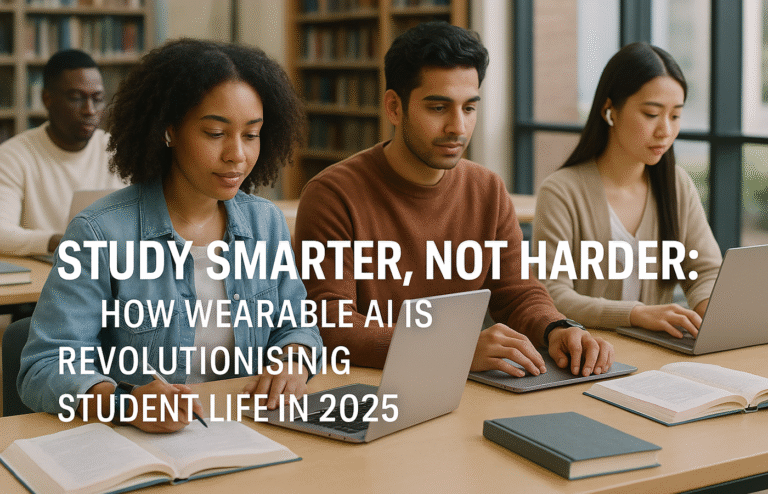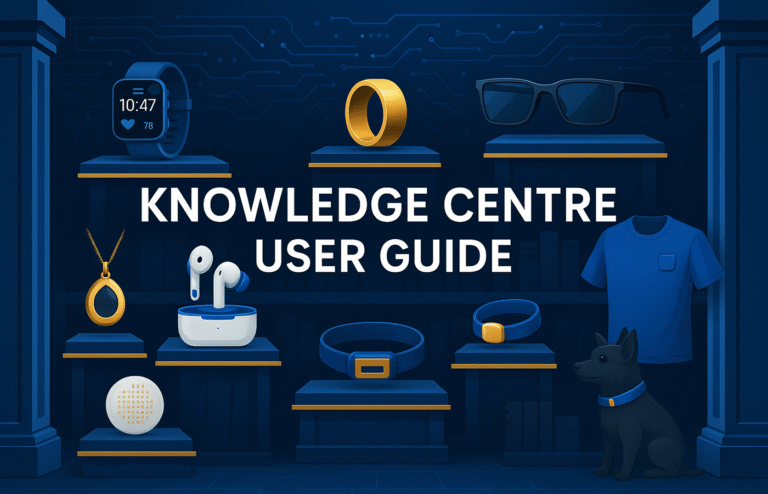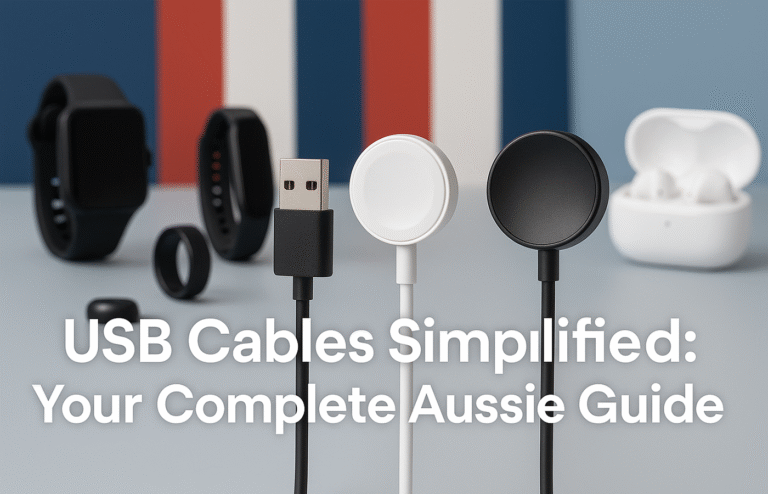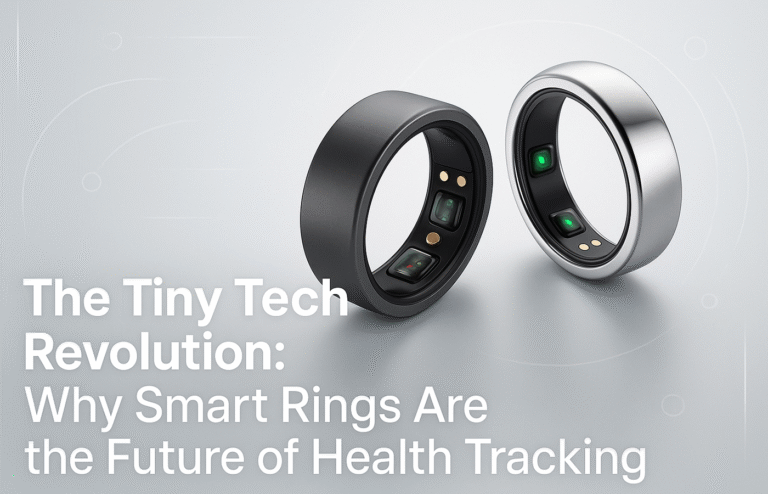Healthcare Worker Solutions: 12-Hour Shift Wearable AI Setup for Australian Medical Professionals
Modern wearable AI devices support healthcare workers through marathon shifts by monitoring stress, tracking recovery, and integrating with hospital environments whilst maintaining hygiene protocols.
Device Recommendations:
● Nurses/Allied Health: Apple Watch Series 9 or Samsung Galaxy Watch Ultra for comprehensive monitoring
● Paramedics: Garmin Instinct 3 series with solar charging for rugged emergency response environments
● Doctors: Google Pixel Watch 2 for Android integration with hospital communication systems
Essential Features:
● Stress monitoring through heart rate variability with gentle vibration alerts during peak stress
● Circadian rhythm tracking and smart alarms for shift work sleep optimisation
● Medical-grade antimicrobial bands and screen protection for hospital hygiene compliance
● Silent notifications and customised alert settings for patient care environments
Investment: Quality healthcare wearables cost $400-800 AUD but reduce sick days and improve long-term career sustainability.
Healthcare Worker Solutions: 12-Hour Shift Wearable Setup
Working a 12-hour shift in Australian healthcare is no joke. Whether you’re a nurse rushing between patients at Royal Melbourne Hospital, a paramedic responding to calls across Sydney, or a doctor pulling an overnight shift in Brisbane, your body and mind face extraordinary demands. The good news? Modern wearable AI technology has evolved to become a genuine ally for healthcare workers, not just another gadget to worry about.
Gone are the days when fitness trackers were just step counters for weekend warriors. Today’s wearable AI devices are sophisticated health monitoring systems that can help you survive, and even thrive, during those marathon shifts that define healthcare work in Australia.
The Reality of 12-Hour Healthcare Shifts
Let’s be honest about what you’re facing out there. A typical 12-hour shift in Australian healthcare means:
- Being on your feet for 10+ hours with minimal breaks
- Dealing with high-stress situations that spike your heart rate repeatedly
- Managing irregular meal times and hydration
- Working through natural circadian rhythm disruptions
- Making critical decisions when fatigue sets in
- Returning home exhausted, only to repeat it all again
Traditional fitness advice doesn’t cut it when your “workout” involves lifting patients, running between emergency calls, and maintaining focus during life-or-death situations. You need technology that understands the unique demands of healthcare work.
Building Your Shift-Survival Wearable Setup
The Foundation: Choosing Your Primary Device
For Nurses and Allied Health: The Apple Watch Series 9 or Samsung Galaxy Watch Ultra are the gold standards. Both offer comprehensive health monitoring, excellent battery life, and seamless integration with hospital WiFi systems. The Apple Watch excels in heart rate accuracy during high-stress situations, while Samsung’s Ultra model offers superior battery life for double shifts.
For Paramedics and Emergency Response: Garmin’s Instinct 3 series takes the crown here. Built for rugged environments, these watches survive everything from patient fluid exposure to the bumps and knocks of ambulance work. The solar charging feature means you’ll never run out of battery during extended emergency responses.
For Doctors and Specialists: Consider the Google Pixel Watch 2 for its exceptional integration with Android systems (important for hospital communication apps) and comprehensive health tracking that doesn’t interfere with medical equipment.
Essential Accessories for 12-Hour Comfort
Medical-Grade Watch Bands Your standard silicone band won’t survive 12 hours of constant handwashing and sanitiser exposure. Invest in antimicrobial sport loops or medical-grade silicone bands that can withstand hospital-strength cleaning protocols. Look for bands with ventilation channels to prevent skin irritation during long shifts.
Portable Charging Solutions Nothing’s worse than your watch dying halfway through a shift. A compact magnetic charging cable that clips to your badge or fits in a pocket ensures you can top up during breaks. Some charging stations are small enough to keep in your car for between-shift charging.
Screen Protection Hospital work is tough on devices. Tempered glass screen protectors and protective cases designed for medical environments protect your investment while maintaining touch sensitivity for quick interactions.
Smart Health Monitoring During Shifts
Stress and Recovery Tracking
Modern wearables excel at detecting stress through heart rate variability (HRV) monitoring. During a 12-hour shift, your device can alert you when stress levels peak, reminding you to take those crucial 30-second breathing breaks that actually make a difference.
The Samsung Galaxy Watch Ultra’s stress monitoring sends gentle vibration alerts when it detects sustained high stress, while the Apple Watch’s Breathe app provides guided breathing exercises you can do while walking between patients.
Sleep and Circadian Rhythm Support
Shift work wreaks havoc on your natural sleep patterns. Wearable AI devices now offer sophisticated sleep coaching tailored to healthcare workers:
- Smart alarm features wake you during lighter sleep phases, helping you feel more refreshed after short naps
- Circadian rhythm tracking helps optimise your pre-shift preparation and post-shift recovery
- Sleep debt monitoring shows when you’re running on empty and need priority rest
Hydration and Nutrition Reminders
When you’re focused on patient care, self-care often takes a backseat. Smart reminders for hydration and nutrition breaks, timed around your typical workflow, help maintain your energy levels throughout the shift.
Seamless Integration with Healthcare Environments
Hygiene and Infection Control
Australian healthcare facilities have strict hygiene protocols, and your wearables need to comply. Look for devices with smooth surfaces that don’t harbour bacteria, antimicrobial coatings, and the ability to withstand frequent sanitising without damage.
The Apple Watch’s smooth ceramic back and the Galaxy Watch’s antimicrobial band options are specifically designed for medical environments. Always check with your facility’s infection control team about approved devices and cleaning protocols.
Communication and Workflow Integration
Many Australian hospitals are adopting communication systems that integrate with wearables. Your smartwatch can receive critical alerts, patient updates, and emergency notifications without you having to check your phone constantly.
Some facilities use wearables for:
- Silent emergency alerts that vibrate on your wrist
- Patient assignment notifications
- Medication reminders
- Break scheduling coordination
Compliance with Medical Equipment
Modern wearables are designed to avoid interference with medical equipment. However, always follow your facility’s guidelines about device use around sensitive equipment like MRI machines or cardiac monitors.
Setting Up for Success: Pre-Shift Preparation
Battery Management Start every shift with 100% battery. Most quality smartwatches easily handle 12+ hours of healthcare use, but enabling battery saver modes during low-activity periods extends life for those inevitable overtime situations.
Customised Alert Settings Configure your device for the hospital environment:
- Silent notifications to avoid disturbing patients
- Prioritised alerts for critical health metrics
- Reduced screen brightness for nighttime shifts
- Emergency contact setup for personal health emergencies
Health Baseline Recording Take a few minutes before each shift to record your baseline metrics. This helps the AI better understand when you’re experiencing unusual stress or fatigue during the shift.
Post-Shift Recovery and Analysis
Your wearable’s job doesn’t end when you clock off. The real value comes from analysing your shift data to improve future performance and wellbeing.
Recovery Metrics Track how long it takes your heart rate to return to baseline after stressful situations. Over time, this data helps identify whether you’re building resilience or accumulating stress that needs addressing.
Sleep Quality Analysis Use sleep data to optimise your between-shift recovery. Understanding your deep sleep patterns helps you schedule rest periods more effectively, especially when working rotating shifts.
Trend Analysis Weekly and monthly trend analysis reveals patterns in your physical response to different types of shifts, helping you prepare better for challenging rotations.
The Australian Healthcare Context
Our healthcare system faces unique challenges that make wearable technology particularly valuable:
Staff Shortages: With many facilities understaffed, individual workers face increased pressure. Wearables help monitor when you’re pushing too hard and need support.
Rural and Remote Work: For healthcare workers in regional Australia, wearables provide an extra safety net when working in isolated conditions with limited backup.
Climate Considerations: Australian weather extremes affect shift work differently across the country. Wearables help monitor heat stress in Queensland summers or hypothermia risks during Tasmanian winter emergency calls.
Looking Forward: The Future of Healthcare Wearables
The wearable AI technology specifically designed for healthcare workers is evolving rapidly. Emerging features include:
- Predictive fatigue analysis that warns before decision-making ability deteriorates
- Automated incident reporting based on physiological stress markers
- Integration with hospital workforce management systems for optimised scheduling
- Advanced fall detection designed for healthcare environments
Making the Investment Worthwhile
Quality healthcare wearables represent a significant investment—typically $400-800 for the device plus accessories. However, consider the cost against:
- Reduced sick days from better health monitoring
- Improved job performance through better stress management
- Long-term career sustainability in demanding healthcare roles
- Personal health benefits that extend far beyond work
Many Australian healthcare workers find that wearables pay for themselves within months through improved wellbeing and work performance.
Your Next Steps
Start simple: choose one primary device that fits your specific healthcare role and facility requirements. Focus on the core health monitoring features before exploring advanced options. Most importantly, give yourself time to adapt—it takes about two weeks of regular use for wearable AI to understand your patterns and provide truly personalised insights.
Remember, these devices aren’t about adding more technology to your already complex workday. They’re about having a silent partner that helps you perform at your best while protecting your long-term health and career sustainability.
Your patients depend on you being at your best. Now you have the technology to help ensure that happens, shift after demanding shift.

